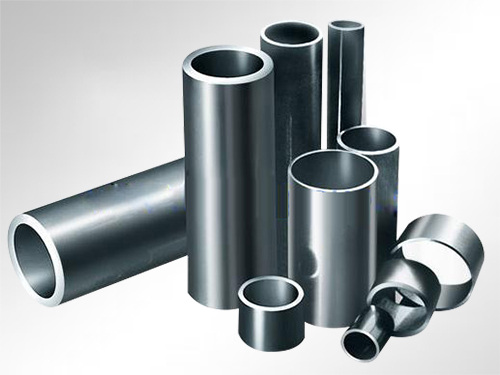In pneumatic systems, the cylinder tube serves as the core structural and functional component of pneumatic cylinders—devices that convert compressed air into linear mechanical motion. The selection of tube material directly impacts system efficiency, weight, corrosion resistance, and service life. Aluminum alloy cylinder tubes have become a preferred solution across industries, owing to their balanced performance characteristics. This article details their material properties, manufacturing processes, advantages over alternative materials, typical applications, and selection criteria.
An aluminum alloy cylinder tube is a precision-engineered cylindrical component for pneumatic cylinders, fabricated from aluminum-based alloys. These alloys are formulated by adding elements such as magnesium (Mg), silicon (Si), copper (Cu), or zinc (Zn) to pure aluminum, which enhances key properties to meet pneumatic system requirements.
Its core material characteristics are tailored for pneumatic applications:
- Lightweight: With a density of ~2.7 g/cm³ (only 1/3 that of steel), aluminum alloy tubes reduce the overall weight of pneumatic cylinders. This is critical for applications where weight minimization drives energy efficiency or mobility.
- Inherent Corrosion Resistance: Aluminum naturally forms a dense, adherent aluminum oxide (Al₂O₃) layer (~5–10 nm thick) on its surface. This layer acts as a barrier against moisture, industrial fumes, and mild chemicals, eliminating the need for additional anti-rust coatings in most environments.
- High Strength-to-Weight Ratio: Alloying elements (e.g., Mg in 6061 alloy, Cu in 2024 alloy) improve tensile strength (up to 310 MPa for 6061-T6) while retaining light weight. This ensures the tube can withstand typical pneumatic operating pressures (6–10 bar, up to 16 bar for heavy-duty use) without deformation.
- Excellent Thermal Conductivity: Aluminum exhibits a thermal conductivity of ~205 W/(m·K), far higher than steel (~50 W/(m·K)) or plastic (~0.2 W/(m·K)). This enables efficient dissipation of heat generated by air compression and piston friction, preventing thermal degradation of seals or lubricants.
2. Manufacturing Process of Aluminum Alloy Cylinder Tubes
The production of aluminum alloy cylinder tubes follows a precision-oriented workflow to ensure dimensional accuracy, surface quality, and performance consistency. Key steps include:
2.1 Extrusion
The process starts with heating an aluminum alloy billet (e.g., 6063, 6061) to its plastic deformation temperature (450–550°C). The heated billet is then pushed through a cylindrical die under high pressure (10–50 MPa) using an extrusion press. This step forms the basic tube shape, with inner holes created via a mandrel (a metal rod) inserted in the die. Extrusion enables high-volume production and ensures uniform wall thickness (tolerance ±0.1 mm for standard sizes).
2.2 Precision Honing & Polishing
After extrusion, the inner surface of the tube undergoes honing—a abrasive machining process using rotating honing stones. This step removes surface irregularities, corrects dimensional deviations (e.g., ovality ≤ 0.05 mm), and achieves a ultra-smooth finish (Ra ≤ 0.4 μm). Subsequent polishing further refines the surface to minimize friction between the tube and piston seals, reducing wear and extending seal life.
2.3 Anodizing (Optional but Common)
To enhance corrosion resistance and surface hardness, most aluminum alloy tubes undergo anodization. This electrochemical process immerses the tube in an electrolyte (e.g., sulfuric acid) and applies an electric current, thickening the natural oxide layer to 10–50 μm. The anodized layer can also be dyed (e.g., black, silver) for aesthetic or identification purposes, and it improves adhesion for secondary coatings if needed.
3. Advantages Over Alternative Materials
Aluminum alloy cylinder tubes outperform traditional materials like steel and plastic in key aspects, making them more suitable for modern pneumatic systems.
| Material | Key Advantages of Aluminum Alloy Tubes | Limitations of Alternatives |
|-------------------|-----------------------------------------------------------------|---------------------------------------------------------------|
| Round Steel Tubes | 1. 30–50% weight reduction, lowering system inertia and energy consumption.<br>2. Inherent corrosion resistance (no need for galvanizing/painting).<br>3. Easier machining (lower cutting force, longer tool life). | 1. High weight increases installation difficulty and energy use.<br>2. Prone to rust without coatings, requiring frequent maintenance.<br>3. Higher machining costs due to hardness. |
| Plastic Tubes | 1. Superior strength (resists cracking under pneumatic pressure, unlike brittle plastics).<br>2. Wide temperature stability (-40°C to 120°C, vs. plastic’s typical 0–60°C).<br>3. Better dimensional stability (no thermal expansion-induced leaks). | 1. Low strength limits use to low-pressure (≤4 bar) applications.<br>2. Poor thermal resistance causes deformation at high temperatures.<br>3. Susceptible to wear and chemical degradation. |
4. Typical Applications
Aluminum alloy cylinder tubes are widely adopted in industries where their lightweight, corrosion resistance, and strength are critical:
- Industrial Automation: Used in pneumatic cylinders for robotic arms, conveyor systems, and assembly line actuators. Their low weight reduces robotic arm inertia, enabling faster, more precise movements.
- Aerospace & Aviation: Integrated into aircraft pneumatic systems (e.g., landing gear actuators, cabin pressure controls). The strength-to-weight ratio helps reduce aircraft weight, improving fuel efficiency.
- Automotive: Applied in pneumatic suspension systems, brake boosters, and door actuators. Weight reduction contributes to better vehicle fuel economy and handling.
- Medical Equipment: Utilized in pneumatic components of surgical robots, diagnostic devices, and patient lifts. Aluminum’s non-toxicity, easy sterilization (compatible with autoclaving), and corrosion resistance meet strict medical hygiene standards.
5. Selection Criteria
To select the optimal aluminum alloy cylinder tube for a pneumatic system, consider the following factors:
1. Operating Environment: For humid/chemical environments (e.g., food processing, marine), choose anodized tubes for enhanced corrosion resistance. For high-temperature applications (e.g., automotive engine bays), select heat-resistant alloys like 6061-T6.
2. Pressure Requirements: Match the tube’s wall thickness to the system’s maximum operating pressure (e.g., 2mm wall thickness for 10 bar, 3mm for 16 bar), per standards like ISO 6431 (pneumatic cylinder dimensions).
3. Dimensional Precision: Ensure the tube’s inner diameter tolerance (e.g., H8) and straightness (≤0.1 mm/m) align with piston seal specifications to prevent air leaks.




